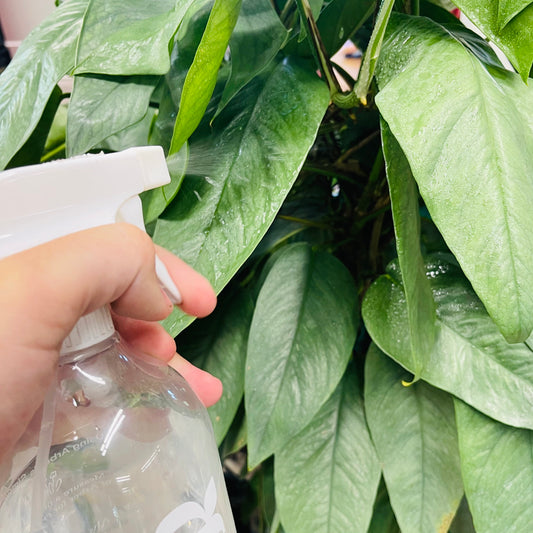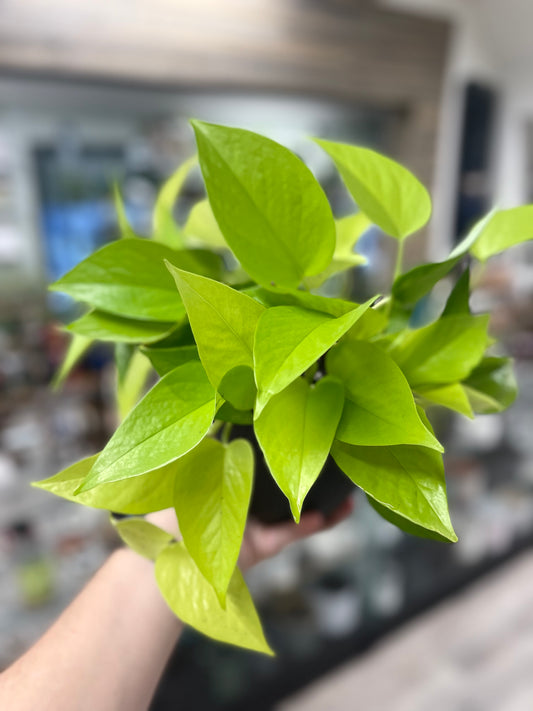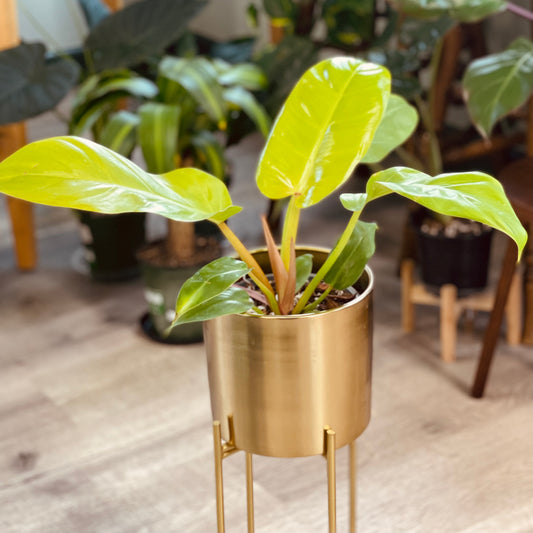Thrips are small, slender insects that belong to the order Thysanoptera. Thrips are very small, and they can be difficult to see with the naked eye. To identify thrips on your plants, you may need to use a magnifying glass or a microscope. They are known for their ability to damage plants by feeding on their sap and causing distortion of the leaves and flowers. Thrips can also transmit plant diseases, such as tomato spotted wilt virus and impatiens necrotic spot virus, making them a major pest for indoor plant enthusiasts and gardeners alike.

There are over 6,000 known species of thrips, which can be divided into two main groups: the Terebrantia and the Tubulifera. The Terebrantia are characterized by having a long, narrow tube-like structure on the tip of their abdomen, while the Tubulifera lack this structure.
Thrips are attracted to plants that are already stressed or damaged, because these plants are more likely to be a good source of food. When a plant is stressed or damaged, it is more likely to produce chemicals called plant volatiles, which can act as an attractant for thrips and other pests.

In addition, stressed or damaged plants may be less able to defend themselves against attack, making them an easier target for thrips and other pests. For example, a healthy plant may be able to produce chemicals that deter thrips, or it may be able to repair damaged tissue more quickly, making it less attractive to thrips.
It is worth noting that thrips are not the only pests that are attracted to stressed or damaged plants. Many other types of pests, including aphids, spider mites, and whiteflies, are also more likely to infest stressed or damaged plants. By keeping your plants healthy, you can help to reduce the risk of an infestation by thrips and other pests.

There are a number of houseplants that are less attractive to thrips and may be less likely to be infested with these pests. Some examples of houseplants that are resistant to thrips include:
-
Herbs: Many herbs, such as rosemary, thyme, and basil, are less prone to pest problems and can make a good choice for those looking to keep thrips at bay.
-
Succulents: Succulents, such as aloe vera and jade plant, are often resistant to thrips and other pests.
-
Citrus plants: Citrus plants, such as lemon and orange trees, are generally resistant to thrips and other pests.
-
African violets: African violets are generally resistant to thrips and other pests.
-
Foliage plants: Some foliage plants, such as ferns and ivy, are less attractive to thrips and may be less likely to be infested.
It is important to note that no plant is completely immune to pests, and even pest-resistant plants can be infested under certain conditions. However, choosing pest-resistant plants can be a good way to reduce the risk of an infestation.
In addition to choosing pest-resistant plants, there are a few other steps you can take to prevent thrips. One of the most effective ways to prevent thrips is to keep your plants well-watered and fertilized, as this can help them to grow strong and resist attack. You can also try using natural predators to help control the thrips population. Beneficial insects such as predatory mites, lacewings, and ladybugs can all help to keep thrips populations in check.

Another effective method for preventing thrips is the use of diatomaceous earth. This natural product is made from the fossilized remains of tiny aquatic organisms, and it works by cutting the exoskeletons of insects, causing them to dehydrate and die. Diatomaceous earth is safe for use around humans and pets, and it can be an effective way to control thrips and other pests without the use of chemical insecticides.
If you suspect that your house plant has thrips, there are a few signs to look for. One of the most obvious signs is the presence of small, dark specks on the leaves or flowers of the plant. These specks are the feces of the thrips, and they can often be seen with the naked eye. You can also look for distorted or discolored leaves and flowers, as well as a sticky residue on the plant's leaves and stems.
If you do find thrips on your house plant, it is important to quarantine the plant immediately to prevent the insects from spreading to other plants. This can be done by placing the plant in a separate room or area, away from other plants. Be sure to disinfect any tools or surfaces that have come into contact with the infested plant to avoid cross contamination.
To eliminate thrips, there are a few options you can try. One option is to use a chemical insecticide, but be aware that these products can be harmful to other beneficial insects and may not be the best choice for everyone. Another option is to use a natural insecticide, such as neem oil or horticultural oil, which can be effective at controlling thrips without posing a risk to other insects.
In addition to these methods, you can also try physically removing the thrips from your plant by hand. This can be time-consuming, but it can be an effective way to get rid of thrips if you only have a small number of plants to deal with.
Thrips can be difficult to control once they become established, so it is important to take steps to prevent an infestation in the first place. In addition to causing damage to plants, thrips can also be a nuisance to humans. Thrips can bite humans and cause skin irritation, and they can also be a nuisance when they fly around indoors.
It is worth noting that some species of thrips are considered beneficial insects, as they can help to pollinate flowers and control the populations of other pests. However, when it comes to indoor plants, it is generally best to control thrips to prevent damage and the spread of diseases.
Overall, thrips can be a major nuisance for indoor plant enthusiasts, but with a little effort, it is possible to control and eliminate these pests. By choosing pest-resistant plants, taking steps to prevent an infestation, and using the right methods to control and eliminate thrips, you can protect your plants and keep your indoor plant collection healthy and thriving.




![Dracaena marginata (16" Plastic Pot) [ID #47618480]](http://zenrockford.com/cdn/shop/files/image_992491d2-6277-4893-842f-11e2983f137e.jpg?v=1725732294&width=533)
![Philodendron Florida Bronze (10" Nursery Pot) [ID #29432345]](http://zenrockford.com/cdn/shop/files/image_a67d0fb6-348e-4829-a7eb-64ce015a3b39.jpg?v=1725643115&width=533)
![Aglaonema Manilla's Pride (3" Plastic Pot) [ID #33051624]](http://zenrockford.com/cdn/shop/files/image_1fb45f38-7b6b-412c-aa29-ed2df326d106.jpg?v=1753291075&width=533)
![Scindapsus Silver Lady (8" Clay Pot w/ Moss Pole) [ID #47128926]](http://zenrockford.com/cdn/shop/files/image_f5c79dcd-5dd4-4ba3-9cf7-f49da779e5ea.jpg?v=1726510803&width=533)